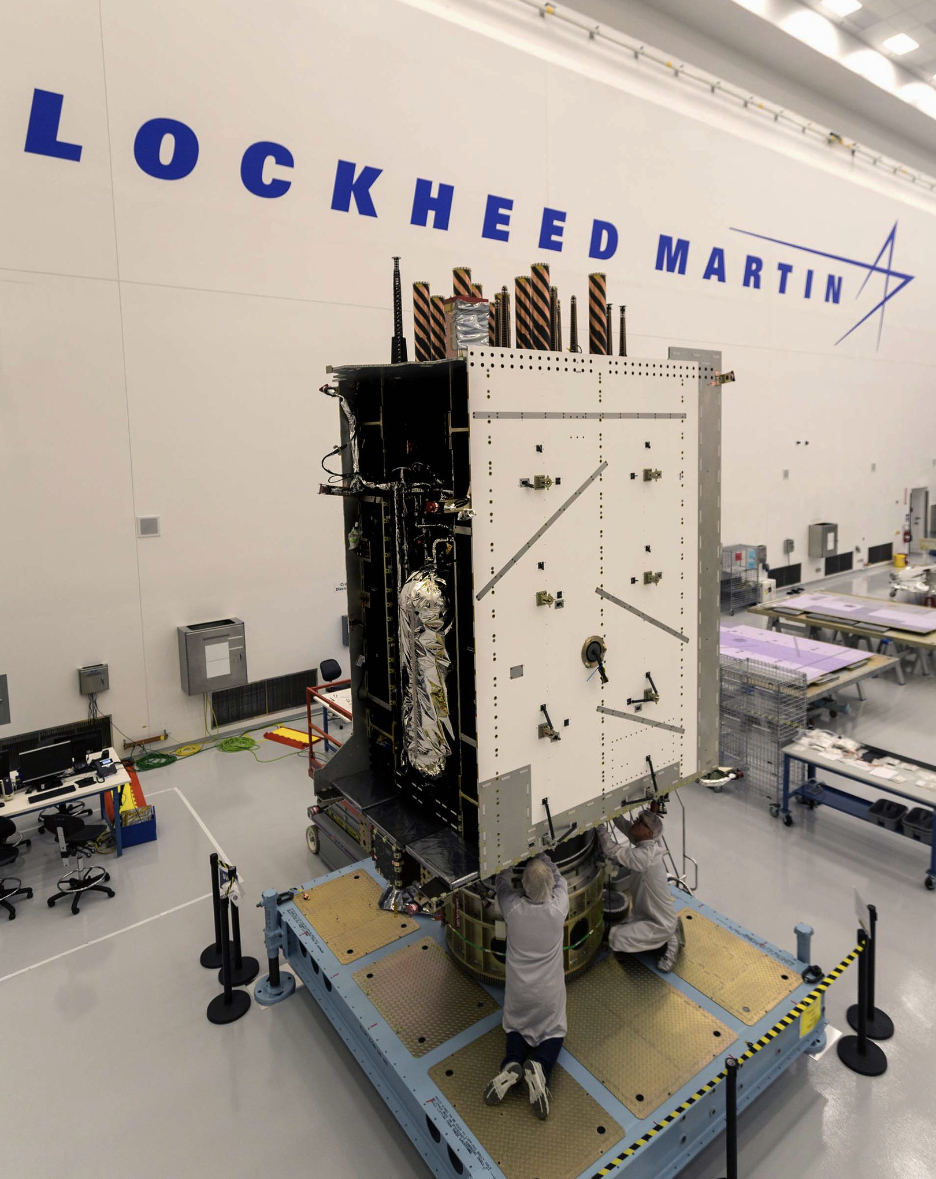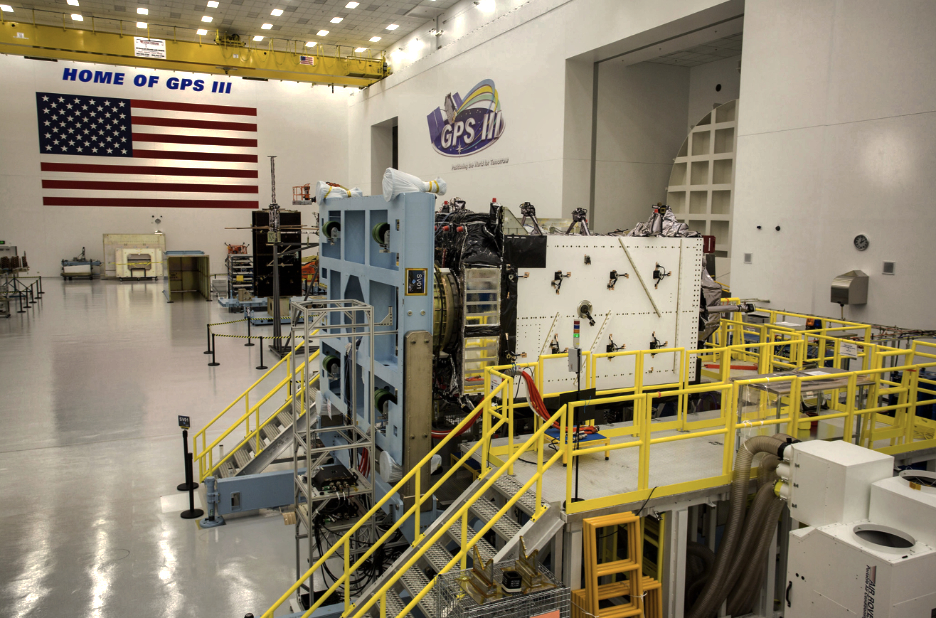
File image: Lockheed Martin technicians successfully integrated the U.S. Air Force’s third GPS III space vehicle (GPS III SV03) on August 14, 2017. Note: This is not SV08, which is scheduled to launch on June 30. Photo is courtesy of Lockheed Martin.
The United States Space Force’s Space and Missile Systems Center’s (SMC) Global Positioning System (GPS) III program reached a major milestone with the successful core mate of GPS III Space Vehicle 08 at Lockheed Martin’s GPS III Processing Facility in Waterton, Colorado. With core mate complete, the space vehicle was named in honor of a NASA trailblazer.
The two-day core mate consisted of using a 10 ton crane to lift and complete a 90 degree rotation of the satellite’s system module, and then slowly lowering the system module onto the satellite’s vertical propulsion core. The two mated major subsystems come together to form an assembled GPS III space vehicle.
Despite the COVID-19 pandemic, SMC and its mission partner Lockheed Martin ensured that SV08 core mate took place – in accordance with all Centers for Disease Control and local guidelines to minimize exposure or transmission of COVID-19. The GPS III Processing Facility’s cleanroom high bay was restricted to only key personnel directly supporting the operation.

Katherine Johnson.
Photo is courtesy of NASA.
When the core mate operation is successfully completed, a GPS III satellite is said to be “born.” In keeping with the team’s tradition of naming GPS III satellites after famous explorers and pioneers, SV08 was named “Katherine Johnson” in honor of the trailblazing National Aeronautics and Space Administration (NASA) mathematician and “human computer” who designed and computed orbital trajectories for NASA’s Mercury, Apollo and space shuttle missions.
One of four African-American women at the center of the nonfiction book by Margot Lee Shetterly and the movie titled “Hidden Figures,” Katherine Johnson was awarded the Presidential Medal of Freedom in 2015 for her groundbreaking contributions to the U.S. Space program.
Other GPS III satellites have been named in honor of explorers including GPS III SV01 “Vespucci” after Amerigo Vespucci; GPS III SV02 “Magellan” after Ferdinand Magellan; and GPS III SV03 “Columbus” after Christopher Columbus.
The next step for the newly christened “Katherine Johnson” is the post-mate Systems Performance Test (SPT) scheduled to begin in August. SPT electrically tests the performance of the satellite during the early phase of build and provides a baseline test data set to be compared to post-environmental test data.
Launched in December 2018 and August 2019, GPS III SV01 and SV02 became part of today’s operational constellation of 31 satellites, on January 13 and April 1, 2020 respectively. GPS III SV03 is scheduled to launch on June 30.
GPS III SV08 is currently scheduled to launch in 2022.
Lt. Col. Margaret Sullivan, the program manager and materiel lead for the GPS III program, said core mate is the most critical of the GPS space vehicle single-line-flow operations. Despite the restrictions presented by the COVID-19 pandemic, the team adapted and worked tirelessly to achieve this essential milestone.

